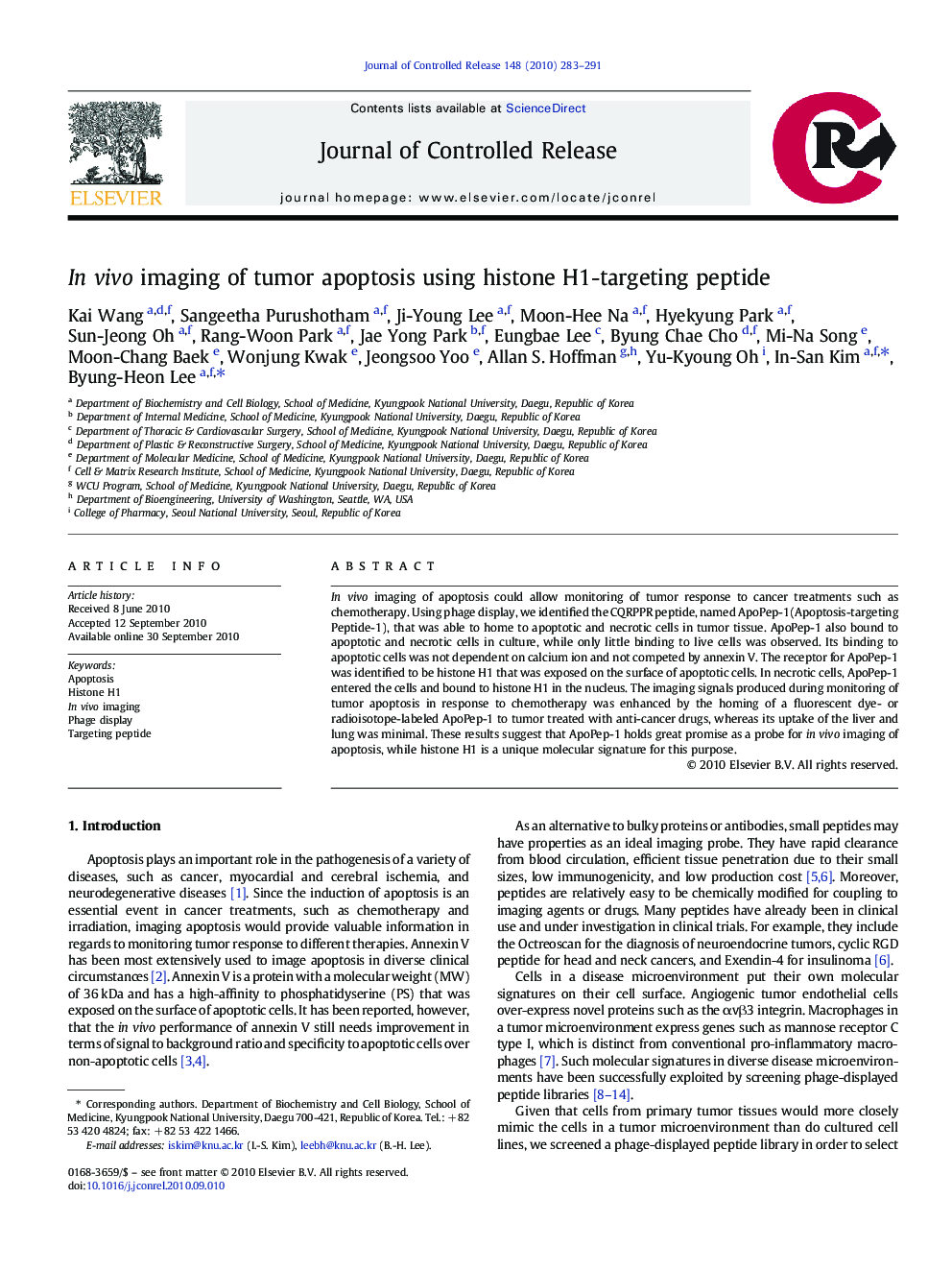| Article ID | Journal | Published Year | Pages | File Type |
|---|---|---|---|---|
| 1425622 | Journal of Controlled Release | 2010 | 9 Pages |
In vivo imaging of apoptosis could allow monitoring of tumor response to cancer treatments such as chemotherapy. Using phage display, we identified the CQRPPR peptide, named ApoPep-1(Apoptosis-targeting Peptide-1), that was able to home to apoptotic and necrotic cells in tumor tissue. ApoPep-1 also bound to apoptotic and necrotic cells in culture, while only little binding to live cells was observed. Its binding to apoptotic cells was not dependent on calcium ion and not competed by annexin V. The receptor for ApoPep-1 was identified to be histone H1 that was exposed on the surface of apoptotic cells. In necrotic cells, ApoPep-1 entered the cells and bound to histone H1 in the nucleus. The imaging signals produced during monitoring of tumor apoptosis in response to chemotherapy was enhanced by the homing of a fluorescent dye- or radioisotope-labeled ApoPep-1 to tumor treated with anti-cancer drugs, whereas its uptake of the liver and lung was minimal. These results suggest that ApoPep-1 holds great promise as a probe for in vivo imaging of apoptosis, while histone H1 is a unique molecular signature for this purpose.
Graphical Abstract(A) In vivo fluorescence imaging signals by the homing of apoptosis-targeting ApoPep-1 peptide were increased in tumor treated with doxorubicin (DXR+) compared to untreated tumor (DXR−) and control peptide. (B) Confocal microscopy showed that ApoPep-1 bound to the surface of apoptotic cells and to the nucleus of necrotic cells, at which it was co-localized with histone H1.Figure optionsDownload full-size imageDownload as PowerPoint slide
